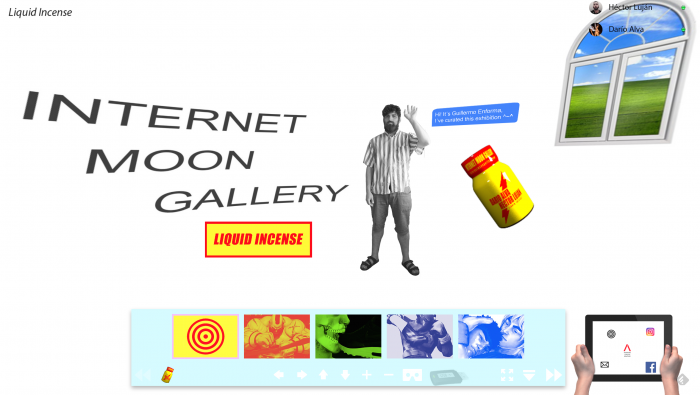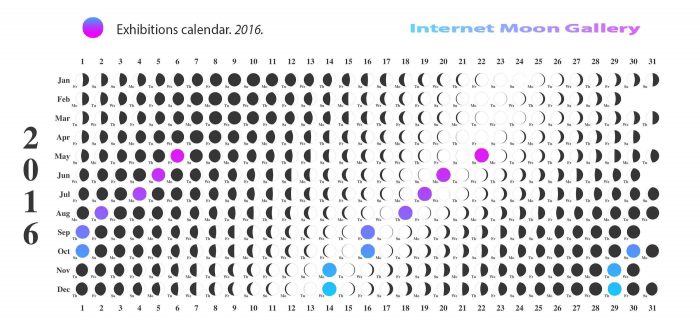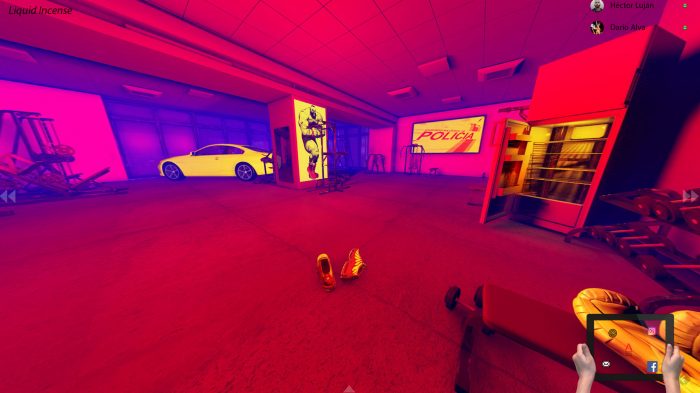Internet Moon Gallery: Art Moves into a Virtual Platform
How would you feel about visiting an art exhibition on the Moon? Internet Moon Gallery is a 3D virtual place created by Manuel Minch that aims to exhibit art using the wifi on the Moon. On May 2016, The project was selected by the Web Residency program, Re-Entering the Ultimate Display, offered by Schlosspost. With an aim to enhance the practices of art exhibition, the website offers a substantial amount of freedom in curating the new media art on a virtual platform.
“It will generate an atmosphere that will allow viewing without the physical traditionalism of the flat communication offered by the screen” (Minch).
This way, the platform promises an atmosphere where new media art experience can be both exciting and authentic. Internet Moon Gallery might be a potential solution for the problem of exhibiting online works in a physical space which diminishes the value of new media art.
Curating New Media Art
Museums and art galleries have been facing several challenges presented by this increasingly media saturated world. While technology encourages curators to find innovative ways to exhibit art, it has changed the way how we (should) experience art enormously. This puts the curator in a tough position since “new media art requires media literacy” (Paul 5) as well as art literacy.
“The white cube creates a “sacred” space and a blank slate for contemplating objects. Most new media art is inherently performative and contextual – networked and connected to the ‘outside’ – and often feels decontextualized in a white space” (Paul 56).
Technology has been trying to be integrated to museums and galleries in several different ways by using installations, projections, and computers. However, Manovich asks “Is it possible to combine these with contemplation, perceptual enjoyment and emotional response?”. In other words, can the way new media art is exhibited in physical places actually reach to the traditional art audience who is not always accustomed with technological guidances to experience art?
Domenico claims that the presence of technology should be reduced to make art enthusiasts “feel more at home”. But, when it comes to net-based art, it becomes harder to achieve this feeling in “the white cube” (Paul 56). Having computers in an exhibition can create an atmosphere like “cybercafe” whereas projecting the entire work and letting people watch it while someone uses the computer can feel like watching TV when someone else has the remote control (Mirapul). None of this is intended by new media artists.
Vuc Cosic, as an internet artist, is also concerned that new media art shown in a physical space, in his words in “a glass test-tube”, is isolated from its context (qtd. in Domenico).
Nevertheless, our relationship with emerging technologies never stay “new”. Domenico contends that we get used to almost everything new media offer therefore we can easily get used to seeing computers and other technologies in museums and galleries, and still interact with the art in a contemplative mode. However, if we can adapt to the changes that new media require, we can just as well become familiar with virtual exhibitions where net-based art can feel more at home.
No need to translate the work for “the white cube”

The main page of the website. There is the artist who curated the recent exhibition.
Agre claims that technology sets out “grammars of action” so that the user adjusts her behavior to fit into the environment (746). For instance, how we take pictures, upload them, like them and many other actions are decided by new media technologies. In this sense, visiting an art gallery online isn’t something unusual since we have already gained the habit of rearranging our actions according to new media.
“I believe the Internet has passed its adolescence; old users have learned to handle the interfaces, young users develop its growth with these tools and big companies are establishing routines for the user during normal browsing.” (Minch).
According to Minch, it is time to improve and create better ways to exhibit art so that net-based art experience could be more authentic. Computer, tablet and phone screens are what we are accustomed to use in daily life, so our eyes easily adjust according to what is inside of the screen without being distracted by outside factors. Minch claims that Internet Moon Gallery achieves to create “the intimacy of the home during daily web browsing.”

Exhibition calendar for 2016. It is designed according to the Lunar Phase.
Internet Moon Gallery also establishes a physical connection with the nature by structuring its exhibition calendar according to the Moon. If it is full moon, it means that there is a new exhibition. So, the act of visiting a new exhibition is constituted by a natural cause which we can experience in this physical world by just looking at the sky.

One of the exhibition rooms in Guillermo Enforma’s last work.
As I’m writing this post, there is a new exhibition opening in the Internet Moon Gallery because it is full moon tonight (16th of September)! Although it challenges the meaning we give to visiting an art exhibition, Internet Moon Gallery is an ambitious attempt to find innovative solutions for exhibiting and contemplating new media art. The question still remains unanswered: are all art enthusiasts ready to ‘grammatize’ their actions according to virtual galleries?
Works Cited
Agre, Philip. “Surveillance and Capture: Two Models of Privacy” Information Society, vol. 10, no. 2, 1994, pp. 101-127.
Engel, Judith. “Born on the Internet: with Manuel Minch” Schlosspost, 28 June 2016. 8 Sept. 2016.<http://schloss-post.com/born-on-the-internet/>.
“Internet Moon Gallery History” Youtube, uploaded by Internet Moon Gallery, 26 April 2016.
Manovich, Lev. “Reading Media Art” Mediagramm. 1995. 10 Sept. 2016. <http://manovich.net/content/04- projects/013-reading-new-media-art/10_article_1995.pdf>.
Minch, Manuel. “Old Galleries Are Boring, New Horizons on Internet” Schlosspost, 23 May 2016. 8 Sept. 2016.<http://schloss-post.com/old-galleries-boring-new-horizons-internet/>.
Mirapul, Matthew. “Arts Online; O.K., It’s Art. But Do You View It at Home or in Public?” New York Times, 19 March, 2001. 10 Sept. 2016. <http://www.nytimes.com/2001/03/19/arts/arts-online-ok-it-s- art-but-do-you-view-it-at-home-or-in-public.html?_r=0>.
Paul, Christiane. New Media in the White Cube and Beyond: Curatorial Models for Digital Art. University of California Press, 15 Dec. 2008.
Quaranta, Domenico. “What’s (Really) Specific about New Media Art? Curating in the Information Age” Rhizome, 06 Dec. 2012. 15 Sept. 2016. <http://rhizome.org/editorial/2012/dec/6/whats-really-specific- about-new-media-art-curating/>.